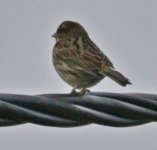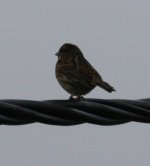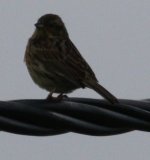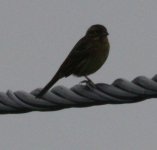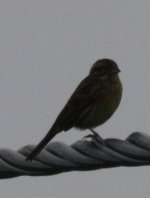rosbifs
PutAin STOP

So had this bird yesterday - through binos I didn't think this was a reed bunting. Looking at the pictures it looks like one but the legs for one are very light....
Any thoughts? I have obviously lightened one...
One other thing that puzzles me is the white spot on the cheek.
Any thoughts? I have obviously lightened one...
One other thing that puzzles me is the white spot on the cheek.




